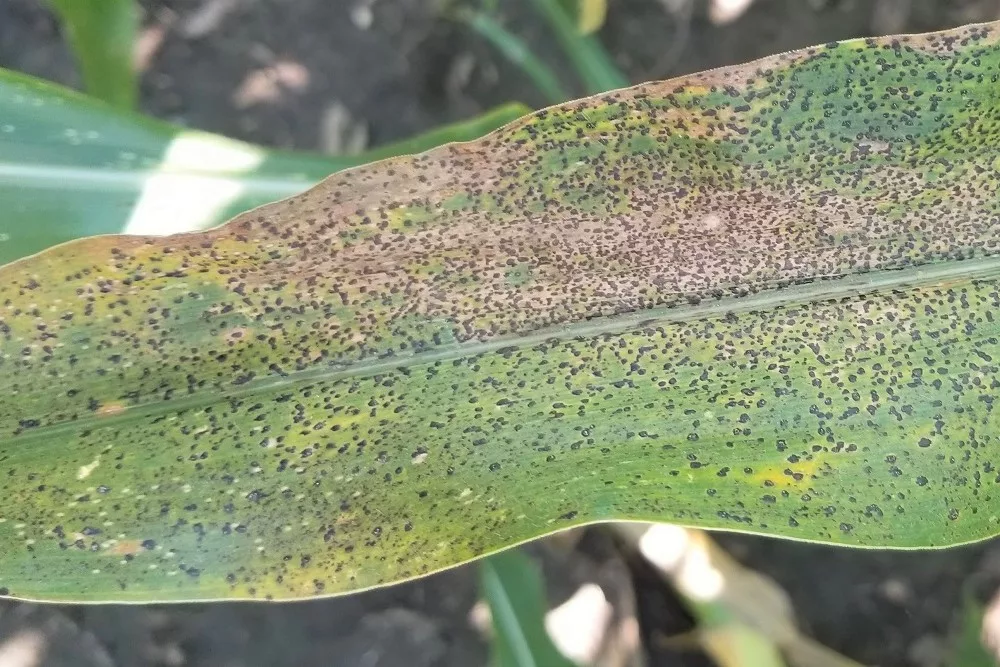Your browser doesn’t support HTML5 audio
Tar spot was found in all 92 Indiana counties this year, and we continue to learn more about it with each season that passes.
“Tar spot is there, right? It’s not a matter of if you’re going to have it, it’s a matter of when,” says BASF Plant Health Technical Marketing Manager Kim Tutor.
She says for tar spot, timing is everything with fungicide applications, especially in this farm economy.
“Our lead recommendation there is Veltyma fungicide. When we look at all of our data across the board, generally speaking, the best bang for your buck is that seven-ounce rate at that VT to R1 timing.”
If you have a history of tar spot in a field or you’re particularly worried about it, she recommends, “take that rate up to 10 ounces, see how far that’s going to carry you. A lot of folks were saying this year, ‘You’ve got to have two applications. You have to apply two passes.’ And with low commodity prices, that second application, that’s a second trip across the field. It can get expensive, but with a product like Veltyma, you’re going to have that really, really long residual disease control. And so that 10-ounce recommendation, I think, served a lot of growers well this season.”
If you do decide to take a second fungicide pass, Tutor offers this advice.
“You want to keep them 20 to 28 days apart. So generally speaking, around that V14 to V16 timing is when I would hit it with my first application of Veltyma. And then that second pass around R2 to R3 and again, we would recommend either Veltyma or our Headline AMP fungicide.”

